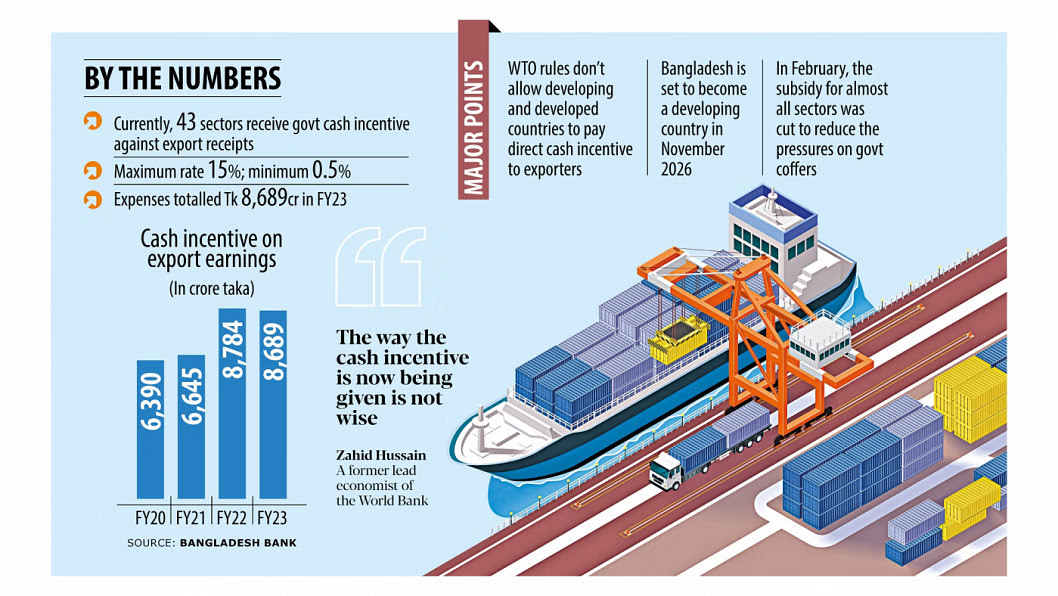Bangladesh aims to boost its annual high-end woollen garment exports tenfold to $1 billion in the next five years as Australia, one of the world’s largest wool producers, is considering Bangladesh as a potential alternative to China for its wool processing.
According to entrepreneurs, Bangladesh currently imports a minimal quantity of woollen fabric from China, Italy or England and produces high-value suits, shirts, pants, and knitwear sweaters for export.
However, due to the absence of domestic sources of raw materials – yarn and fabric, the country is unable to fully tap into its potential in the $17 billion market, dominated mainly by Australia and China.
Entrepreneurs say having wool processing units here will result in yarn and fabric being manufactured locally, thereby leading to competitiveness in lead time. Currently, they are falling behind in this respect, causing buyers to lack confidence in placing orders for such garments.
Sources in the commerce ministry say a delegation headed by Joe Hall, chief executive officer of Wool Producers Australia, the apex national body for the wool-producing industry in that country, visited Dhaka in October to verify the feasibility of setting up wool processing units here.
During the visit, the delegation had meetings with representatives of the Bangladesh Textile Mills Association (BTMA) and entrepreneurs’ organisations in the garment sector through the initiative of the commerce ministry.
“The Australian delegates expressed their willingness to provide all sorts of cooperation and support to explore the potential of wool processing in Bangladesh. They proposed mutual networking to expand the manufacturing of wool processing,” according to the minutes of that meeting.
Saleudh Zaman Khan, vice president of the BTMA, who attended the meeting, told The Business Standard, “Currently, Australia is the single largest wool-producing country. However, 80% of their wool is processed in China. As part of a geopolitical shift, they want to reduce their dependence on China and are considering Bangladesh as an alternative. Consequently, a significant opportunity has been created for us.”
He said, “At one time, we were only producing cotton yarn priced at $1.5 per pound, and we couldn’t imagine more. In the last 15 years, we have also ventured into linen yarn production, which now costs $9 per pound. We have come a long way since then.
“Now, we are contemplating the third stage: planning to produce woollen yarn, including premium-quality cashmere wool priced at $76 per pound. The normal quality of Merino wool will be around $13 per pound.”
Entrepreneurs suggest that this type of wool processing will not require a significant investment. It can be initiated by incorporating new machinery and technical expertise into the existing setup of spinning mills.
The number of factories in Bangladesh exporting this type of woollen garment is not very high. The list includes East West Group and Energypac Fashions Limited.
Energypac Fashions currently manufactures more than 15,000 pieces of suits annually, with a portion made of blended yarns and woollen fabrics. Each of these suits retails for around $400.
Humayun Rashid, managing director of Energypac Group, told TBS, “Currently, after receiving an order, it takes about 45 days to import raw material since opening a letter of credit. This delay in lead time puts us behind our competitors. However, if there were an opportunity to procure raw materials locally, the buyer would be in a comfort zone and have more confidence.”
He continued, “If wool yarn and fabric are produced locally, we will advance in competitiveness, and export figures will increase significantly. Presently, the annual export of wool clothing is about $100 million, a figure that could potentially increase to $1 billion in the next five years.”
Saleudh Zaman believes that with proper exploitation of the upcoming opportunity, it may not even take five years to increase the shipment to $1 billion.
According to BTMA sources, the current global wool fibre market size is over $30 billion. However, various international research sites suggest a market size of $17 billion, with predictions that it may reach close to $25 billion by 2030, driven by a compound annual growth rate (CAGR) of 5.5%.
Import duties pose biggest challenges
Entrepreneurs highlight that there is currently a substantial import tax on fibres other than cotton or cotton-made yarn or fabric, as well as on other raw materials. This tax hurdle becomes a major obstacle to the progress of this sector.
Currently, the import tax on wool fibre is around 38%. Importing with such a high tax diminishes the opportunity to enhance the competitiveness of exports. Consequently, a tax waiver for the import of this raw material, similar to that for cotton, would be beneficial for exporters.
Leaders of BTMA say they have been urging the National Board of Revenue for duty waivers on the import of such fibres, yarns, or fabrics for the past few years to boost exports, but to no avail.
This issue was also raised during a meeting with the Australian delegation on 23 October, with representatives from the commerce ministry.
In the meeting, Additional Commerce Secretary Md Abdur Rahim Khan assured that these recommendations would be presented to the ministry. News Sources :tbsnews
















